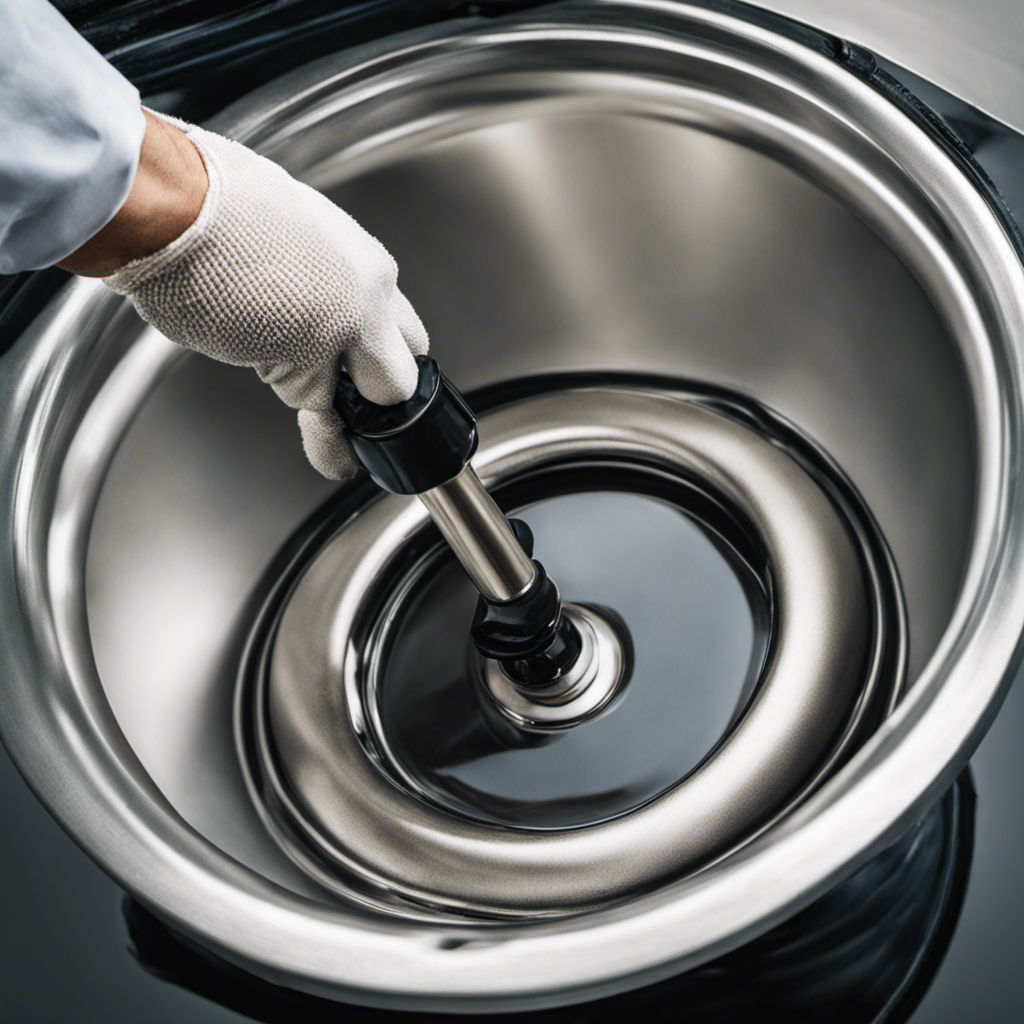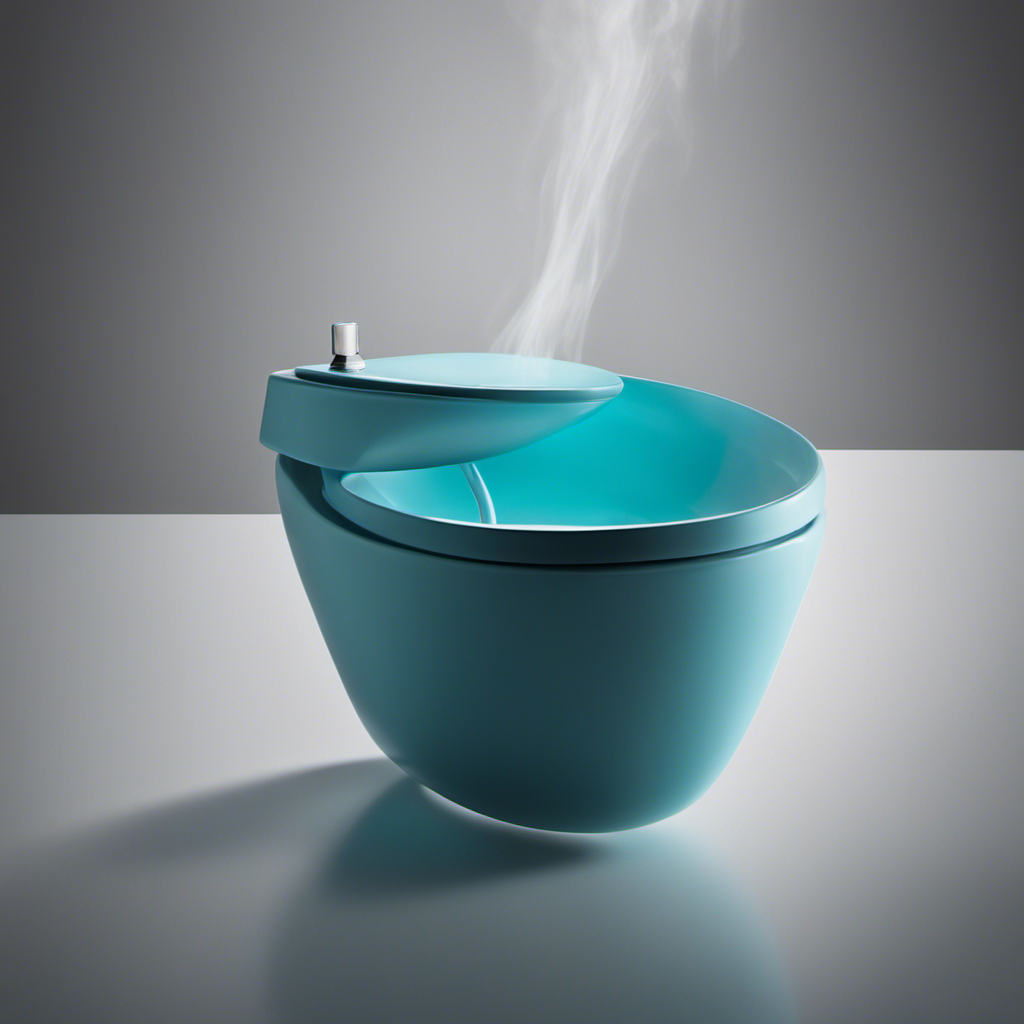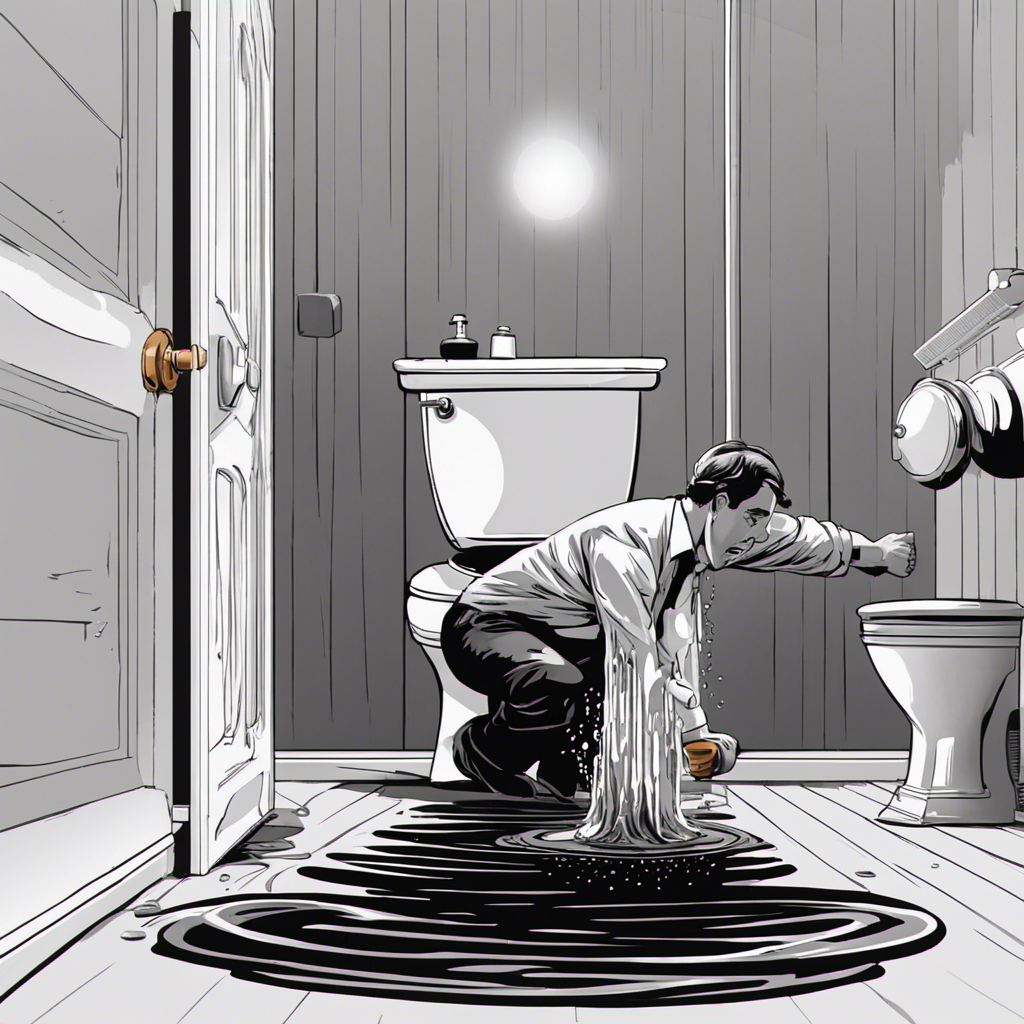As an experienced RV enthusiast, I’ve been in some pretty messy situations, but nothing compares to a clogged toilet on the road. Picture this: you’re in the middle of nowhere, surrounded by nature’s beauty, and suddenly, your RV toilet decides to throw a tantrum.
Don’t panic! In this article, I’ll guide you through the step-by-step process of unclogging an RV toilet. With the right tools and a little know-how, you’ll be back to enjoying your travels in no time.
Key Takeaways
- Excessive use of toilet paper and flushing non-flushable items are common causes of RV toilet clogs.
- Essential tools for unclogging an RV toilet include a plunger with a flange, gloves, a toilet auger, drain cleaner, and a bucket.
- A step-by-step guide to clearing a partially clogged RV toilet includes identifying common causes, determining severity, using a plunger or auger, and testing for proper drainage.
- Prevent future clogs by disposing of non-biodegradable items properly, using RV-friendly toilet paper, regularly cleaning the toilet and plumbing system, and flushing with plenty of water.
Understanding the Common Causes of RV Toilet Clogs
You need to understand the common causes of RV toilet clogs so you can effectively unclog your toilet.
There are several factors that can contribute to a clogged toilet in your RV. One of the main causes is excessive use of toilet paper. Using too much toilet paper can easily lead to a clog.
Another common cause is flushing items that are not meant to be flushed, such as feminine hygiene products or wipes. These items do not break down easily and can quickly block the pipes.
Additionally, a low water level in the toilet bowl can also cause clogs. It is important to keep an eye out for signs of a clogged toilet, such as slow draining or water backing up into the bowl.
Understanding these causes and recognizing the signs will help you prevent and address RV toilet clogs effectively.
Essential Tools and Supplies for Unclogging an RV Toilet
One of the essential tools for fixing a clogged RV toilet is a plunger. To effectively unclog an RV toilet, it is crucial to understand the mechanisms behind it.
The RV toilet has a trap that prevents odors from entering the living space, and it is important not to damage this trap while unclogging.
When choosing the right plunger, opt for a toilet plunger with a flange, as it is specifically designed for toilets. This type of plunger creates a better seal and provides more suction power. Additionally, make sure the plunger has a long handle for better leverage.
To use the plunger effectively, place it over the toilet drain and apply firm pressure, using an up-and-down motion. This will create suction and dislodge the clog.
Step-by-Step Guide to Clearing a Partially Clogged RV Toilet
When it comes to dealing with a partially clogged RV toilet, it’s important to understand the common causes of clogging, effective methods for unclogging, and steps to prevent future clogs.
First, common causes of clogging can include excessive toilet paper usage, foreign objects being flushed, or a buildup of waste and debris.
To effectively unclog the toilet, you can try using a plunger or a toilet auger depending on the severity of the clog.
Common Clogging Causes
The most common causes of clogging in an RV toilet are excessive toilet paper usage and the disposal of non-biodegradable materials. Understanding these common signs and taking effective preventive measures can help avoid clogs and keep your RV toilet running smoothly.
One common sign of a clogged RV toilet is slow draining or water backup. If you notice this, it’s important to act quickly to prevent further clogging.
To prevent clogs, be mindful of the amount of toilet paper you use. Use only a modest amount and flush frequently to ensure proper disposal. Additionally, avoid flushing non-biodegradable items such as wipes, feminine products, or paper towels, as these can easily cause clogs.
Effective Unclogging Methods
To effectively clear a clog in your RV toilet, you can try using a plunger or a toilet auger. These are the most common and effective methods for DIY toilet unclogging. Here are step-by-step instructions on how to use them.
-
Plunger method:
- Start by wearing rubber gloves for hygiene purposes.
- Place the rubber cup of the plunger over the drain hole in the toilet bowl.
- Push down firmly and then pull up quickly, creating a suction force.
- Repeat this motion several times until the clog is dislodged.
- Flush the toilet to check if the water is draining properly.
-
Toilet auger method:
- Put on gloves and insert the toilet auger into the toilet drain.
- Rotate the handle clockwise while gently pushing it forward.
- Keep pushing and rotating until you feel resistance.
- Once you reach the clog, continue rotating to break it apart.
- Slowly pull the auger out and flush the toilet to test for proper drainage.
These unclogging hacks can save you time and money, allowing you to handle simple toilet clogs on your own. Remember to always exercise caution and consult a professional if the clog persists or worsens.
Preventing Future Clogs
Make sure you dispose of sanitary products, baby wipes, and excessive toilet paper in the trash instead of flushing them to prevent future clogs.
Here are four maintenance tips for avoiding clogging incidents:
-
Use RV-friendly toilet paper: Regular toilet paper may not break down easily and can lead to clogs. Opt for specially formulated RV toilet paper that dissolves quickly.
-
Regularly clean the toilet and plumbing system: Regular cleaning helps prevent build-up and keeps the toilet functioning properly. Use RV-safe cleaning products to avoid damaging the system.
-
Flush with plenty of water: After each use, make sure to flush the toilet with plenty of water to help move waste through the plumbing system and prevent clogs.
-
Be mindful of what you flush: Avoid flushing items such as paper towels, feminine hygiene products, or any other non-biodegradable items. Stick to waste and RV-approved toilet paper.
Effective Methods for Dealing With a Severely Clogged RV Toilet
When dealing with a severely clogged RV toilet, there are a few key options to consider.
First, you can try using a plunger or an auger to physically dislodge the blockage.
If this doesn’t work, there are chemical cleaner options available that can help break down the clog.
However, if the clog persists despite these attempts, it may be necessary to seek professional help to resolve the issue.
Plunger or Auger
Grab a plunger or auger to tackle the clog in your RV toilet. Don’t worry if you don’t have a plunger or auger on hand; there are alternative methods you can try to DIY unclog your toilet. Here are four effective DIY unclogging methods:
-
Hot Water and Dish Soap: Pour a pot of boiling water mixed with dish soap down the toilet. Let it sit for a few minutes, then flush. The hot water and soap will help break down the clog.
-
Baking Soda and Vinegar: Sprinkle baking soda into the toilet bowl, then pour vinegar over it. Let the mixture sit for a few minutes before flushing. The chemical reaction between the baking soda and vinegar will help dissolve the clog.
-
Wire Hanger: Straighten a wire coat hanger and create a small hook at one end. Insert the hooked end into the toilet drain and gently maneuver it to break up the clog.
-
Enzyme-based Drain Cleaner: Use an enzyme-based drain cleaner specifically designed for RV toilets. Follow the instructions on the packaging to effectively dissolve the clog.
Remember to always use caution when attempting to unclog your RV toilet. If these methods don’t work, it may be best to call a professional plumber for assistance.
Chemical Cleaner Options
If you’re looking for an alternative to using a plunger or auger, consider trying one of these chemical cleaner options for your clogged RV toilet.
Chemical cleaners are designed to break down the clog and clear your toilet bowl effectively.
Here’s a step-by-step guide on how to use chemical cleaners as alternative solutions:
-
Choose a chemical cleaner specifically formulated for RV toilets. Read the label carefully for instructions and safety precautions.
-
Put on protective gloves and goggles to ensure your safety.
-
Pour the recommended amount of the chemical cleaner into the toilet bowl.
-
Let the cleaner sit for the specified time, usually around 15-30 minutes. This allows the chemicals to work on breaking down the clog.
-
After the designated time, flush the toilet to see if the clog has been cleared. If not, repeat the process or consider trying a different chemical cleaner.
Remember to always follow the instructions and safety guidelines provided by the manufacturer when using chemical cleaners.
Professional Help Needed?
Sometimes, it’s best to seek the assistance of a professional plumber to resolve stubborn clogs in your recreational vehicle’s bathroom. While there are many DIY methods you can try, some clogs may require professional expertise.
Here are four reasons why professional assistance might be needed:
-
Expertise: Plumbers have the knowledge and experience to quickly identify the cause of the clog and determine the most effective solution.
-
Specialized Tools: Professionals have access to specialized tools and equipment that can effectively remove stubborn clogs without causing damage to your RV’s plumbing system.
-
Time-Saving: Hiring a professional plumber saves you time and effort. They can efficiently unclog your RV toilet, allowing you to get back to enjoying your trip.
-
Avoiding Further Damage: Attempting DIY methods without proper knowledge or tools can potentially worsen the clog or cause damage to your RV’s plumbing system.
While DIY methods can sometimes work, it’s important to recognize when professional assistance is needed to ensure a successful and long-lasting solution.
Preventive Measures to Avoid Future RV Toilet Clogs
To avoid future RV toilet clogs, you’ll want to regularly maintain and clean your toilet system. By following these maintenance tips, you can prevent clogs and ensure smooth operation of your RV toilet.
First, be mindful of what you flush down the toilet. Avoid flushing anything other than toilet paper and waste.
Next, use plenty of water when flushing to help move waste through the system.
Additionally, consider using RV-friendly toilet paper that breaks down easily.
It’s also important to regularly inspect and clean the toilet valve, flapper, and seals to prevent build-up and ensure proper functioning.
Lastly, empty and clean your black water tank regularly to prevent solids from accumulating. By implementing these maintenance measures, you can reduce the risk of future clogs and keep your RV toilet in optimal condition.
Now, let’s move on to troubleshooting and additional tips for unclogging an RV toilet.
Troubleshooting and Additional Tips for Unclogging an RV Toilet
Let’s start by checking if there’s any visible blockage in the toilet bowl or the drain pipe. Sometimes, a simple blockage can be easily removed without the need for additional troubleshooting methods or alternative unclogging techniques.
However, if the blockage is not visible or cannot be easily cleared, here are some additional troubleshooting methods and alternative unclogging techniques you can try:
-
Use a plunger: Plunge the toilet forcefully, making sure to create a tight seal around the drain. This can help dislodge the blockage and allow it to flow through.
-
Try a toilet auger: This tool is specifically designed to reach and remove stubborn clogs in the toilet drain. Insert the auger into the drain and rotate it to break up or pull out the clog.
-
Use a chemical drain cleaner: Follow the instructions on the product carefully, as different cleaners may have different application methods. These cleaners can dissolve the clog and restore proper flow.
-
Use a plumbing snake: Insert the snake into the toilet drain and rotate it to break up or remove the clog. This tool is especially useful for hard-to-reach blockages.
Frequently Asked Questions
How Long Does It Usually Take to Unclog an RV Toilet?
It usually takes me around 30 minutes to unclog an RV toilet. Some common causes of clogs include excessive toilet paper, foreign objects, or a buildup of waste.
Can I Use Regular Household Cleaning Products to Unclog an RV Toilet?
Yes, you can use regular household cleaning products to unclog an RV toilet. However, it is recommended to use specific RV toilet cleaner or alternative methods like using a plunger or a drain snake.
Are There Any Specific Brands of Toilet Plungers That Work Better for Unclogging RV Toilets?
When selecting a plunger for an RV toilet, it’s crucial to choose the best toilet plunger brands. Consider factors such as durability, suction power, and design. A reliable plunger can effectively unclog an RV toilet.
Can I Use a Snake or Auger to Unclog an RV Toilet?
Yes, a toilet snake or auger can be used as alternative methods to unclog an RV toilet. It is important to follow the proper steps and use caution when attempting this method.
What Should I Do if None of the Unclogging Methods Mentioned in the Article Work?
If none of the methods mentioned in the article work, I suggest trying alternative unclogging methods like using a plunger or a chemical drain cleaner. If all else fails, it may be best to seek professional help.
Conclusion
In conclusion, unclogging an RV toilet is a task that requires patience and the right tools. By understanding the common causes of clogs and following a step-by-step guide, you can effectively clear a partially or severely clogged toilet.
Remember to take preventive measures to avoid future clogs and troubleshoot any issues that may arise. With a little effort, you’ll be able to restore your RV toilet to its full functionality and enjoy a stress-free camping experience.
Happy unclogging, and may your toilet flow freely like a majestic waterfall!










